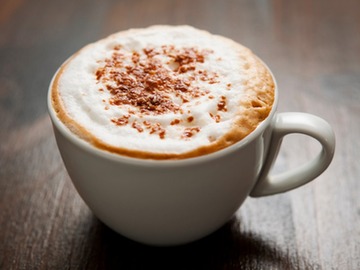It's a coffee world. Pour-over, French press, macchiato, espresso, cappuccino: all of them are fancy ways to take your morning caffeine infusion.
Many of the terms for coffee drinks come to us from Italian, where they are terms of utility. Espresso comes from the Italian word that means "pressed-out," which explains how the coffee drink is made; macchiato is short for "caffe macchiato," which means "coffee with a spot (of milk)." But cappuccino bucks the trend: it comes from an Italian word that refers not to coffee, but to friars.

'Cappuccino' takes its name from the Capuchin friars: the color of the espresso mixed with frothed milk was similar to the color of the Capuchin robe.
The Capuchin friars are members of the larger Franciscan orders of monks, and their order was founded in the 16th century in Italy. They were renowned for their missionary work among the poor, as well as their dedication to extreme austerity, poverty, and simplicity:
The characteristic simplicity of these friars is, indeed, proverbial; and it may, too, be inferred from their speech, their manners, and from their very aspect; besides being yet further illustrated by several sayings current in Italy—where their order is numbered by the thousand—such as "to dine al cappuccino," to make but a sorry meal; and "to travel al cappuccino," i.e. to journey on foot.
—Algernon Taylor, Scenes in French Monasteries, 1746
The Capuchins were also renowned for their dress. They wear a simple brown robe that includes a long, pointed hood that hangs down the back. The Italian word for this distinctive hood, cappuccio, gave rise to the Italian name for the order. It also gave rise to the Italian word for a friar of the Capuchin order used in the excerpt above: cappuccino.
When the cappuccino drink was first introduced in Italy, it was named after the Capuchin friars because the color of the espresso mixed with frothed milk was similar to the color of the Capuchin robe. The name, whimsical in a world of utilitarian coffee-drink names, stuck; we borrowed it into English in the late 1800s.
The friars, as you may have noticed, are called Capuchins in English; they've lent their English name to a women's cloak with a hood, as well as to a monkey with a ruff of fur on its neck that looks like the friar's hood.




